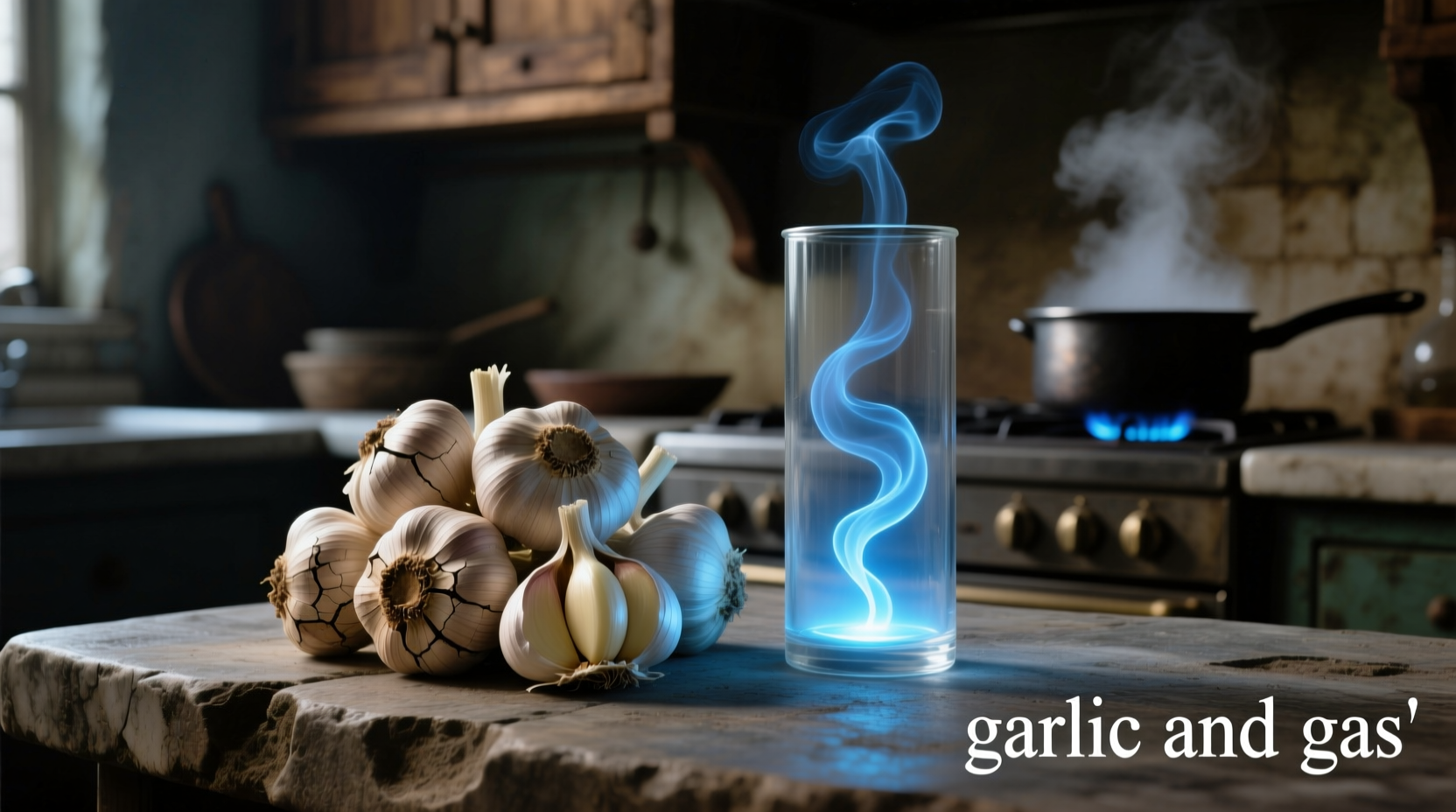Yes, garlic can cause gas and bloating in some people due to its high fructan content, a type of FODMAP carbohydrate that ferments in the gut. However, most people can enjoy garlic in moderate amounts without issues, and certain preparation methods significantly reduce its gas-producing potential.
Garlic adds incredible flavor to dishes worldwide, but if you've ever experienced uncomfortable bloating or gas after enjoying a garlic-heavy meal, you're not alone. Understanding why this happens and how to prevent it lets you continue enjoying garlic's culinary and health benefits without digestive discomfort.
The Science Behind Garlic and Gas Production
Garlic contains fructans, a type of carbohydrate belonging to the FODMAP group (Fermentable Oligosaccharides, Disaccharides, Monosaccharides, and Polyols). These short-chain carbohydrates aren't fully absorbed in the small intestine and travel to the large intestine, where gut bacteria ferment them, producing gas as a byproduct.
According to research published in the Journal of Gastroenterology and Hepatology, fructans are among the most common FODMAPs triggering digestive symptoms in sensitive individuals. Garlic ranks high on the fructan content scale compared to other allium vegetables.
| Allium Vegetable | Fructan Content (per 100g) | Gas-Producing Potential |
|---|---|---|
| Raw Garlic | 2.9g | High |
| Cooked Garlic | 1.8g | Moderate |
| Onion | 2.4g | High |
| Leek | 1.3g | Moderate |
Data source: Monash University Low FODMAP Diet Guide (2023)
Why Some People Experience Gas While Others Don't
Your gut microbiome composition significantly affects how you process garlic. People with irritable bowel syndrome (IBS) or small intestinal bacterial overgrowth (SIBO) often experience more pronounced symptoms. The American College of Gastroenterology notes that approximately 15% of the global population has IBS, making them more susceptible to garlic-related digestive issues.
Individual tolerance varies widely. Some people can eat multiple cloves without issues, while others react to even small amounts. This difference stems from:
- Genetic variations in digestive enzymes
- Gut microbiome diversity and composition
- Previous digestive health conditions
- Overall dietary patterns

Practical Strategies to Enjoy Garlic Without Gas
You don't need to eliminate garlic from your diet. These evidence-based approaches can significantly reduce digestive discomfort while preserving flavor:
Cooking Methods That Reduce Gas Production
Heat breaks down some fructans. Research from the National Institutes of Health shows that prolonged cooking reduces FODMAP content:
- Slow-roasting whole bulbs: Converts fructans to simpler sugars with less fermentation potential
- Infusing oils: Extracts flavor compounds without transferring most fructans (fructans are water-soluble, not oil-soluble)
- Pre-cooking garlic: Sauté garlic separately before adding other ingredients, then remove before serving
Smart Pairing Techniques
Certain food combinations can minimize gas production:
- Pair garlic with digestive-friendly herbs like ginger or fennel
- Consume with probiotic-rich foods like yogurt to support gut balance
- Avoid combining with other high-FODMAP foods in the same meal
Alternative Garlic Options
These garlic alternatives provide flavor with less digestive impact:
- Black garlic: Fermented garlic with significantly reduced fructan content
- Garlic-infused oil: Flavor without the problematic carbohydrates
- Asafoetida (hing): Traditional Indian spice that mimics garlic flavor with minimal digestive impact
When Garlic-Related Gas Signals a Larger Issue
Occasional gas after garlic consumption is normal. However, consult a healthcare provider if you experience:
- Severe pain accompanying gas
- Consistent symptoms after minimal garlic exposure
- Additional symptoms like diarrhea, constipation, or weight loss
- Symptoms that persist despite dietary modifications
These could indicate underlying conditions such as IBS, SIBO, or fructose malabsorption that require professional management. The International Foundation for Gastrointestinal Disorders recommends keeping a detailed food diary for two weeks to identify specific triggers before making significant dietary changes.
Building Garlic Tolerance Gradually
Many people can increase their garlic tolerance through careful reintroduction:
- Start with very small amounts (1/8 clove) of cooked garlic
- Maintain this amount for 3-5 days while monitoring symptoms
- Gradually increase by small increments every few days
- Track your progress in a food journal
This approach allows your gut microbiome to adapt gradually. A study in the Journal of Nutrition found that 68% of participants with mild garlic sensitivity successfully increased their tolerance using this method over 6-8 weeks.
Frequently Asked Questions
Can I completely eliminate garlic from my diet without nutritional consequences?
Yes, you can safely eliminate garlic without nutritional deficiencies. While garlic contains beneficial compounds like allicin, these aren't essential nutrients. You'll miss some potential health benefits but won't experience nutritional deficiencies. Focus on incorporating other allium vegetables like chives or scallion greens which have lower FODMAP content.
Does aged garlic extract cause less gas than fresh garlic?
Yes, aged garlic extract typically causes less gas than fresh garlic. The aging process breaks down fructans and converts them to simpler compounds. Research published in Nutrition Research shows aged garlic extract contains approximately 70% less fructan than raw garlic, making it better tolerated by sensitive individuals.
Why do I only experience gas from raw garlic but not cooked garlic?
Raw garlic contains higher concentrations of intact fructans. Cooking breaks down some of these complex carbohydrates through heat and enzymatic processes. The Journal of Agricultural and Food Chemistry reports that 10 minutes of cooking reduces garlic's fructan content by approximately 38%, with longer cooking times yielding greater reductions.
Are there specific garlic varieties that cause less gas?
While research is limited, some anecdotal evidence suggests elephant garlic (which is actually a leek relative) may be better tolerated than regular garlic due to its different carbohydrate profile. However, individual responses vary significantly, so personal experimentation is necessary to determine your tolerance levels.











 浙公网安备
33010002000092号
浙公网安备
33010002000092号 浙B2-20120091-4
浙B2-20120091-4